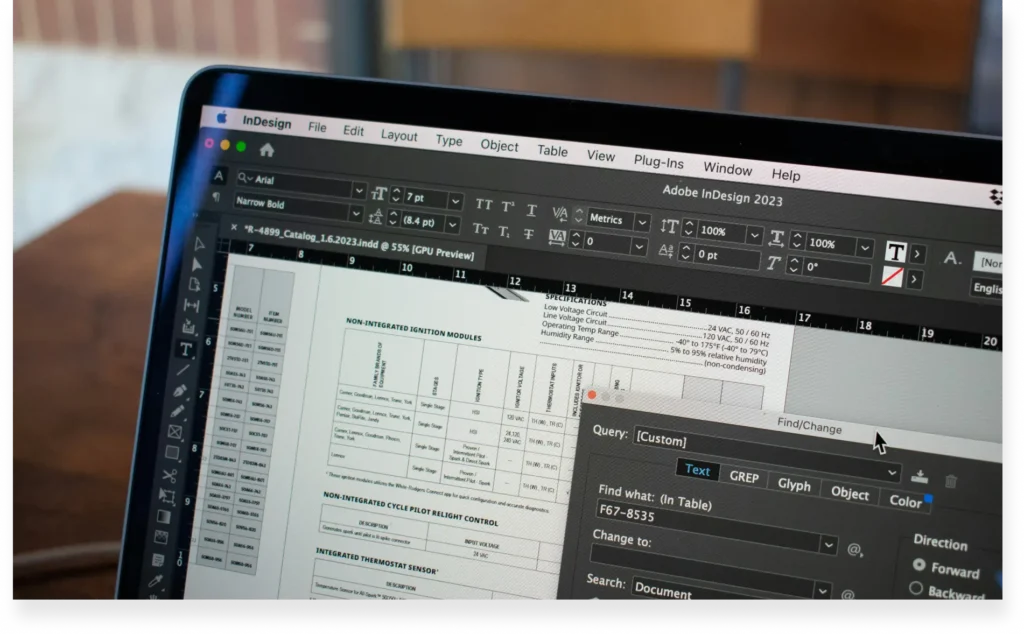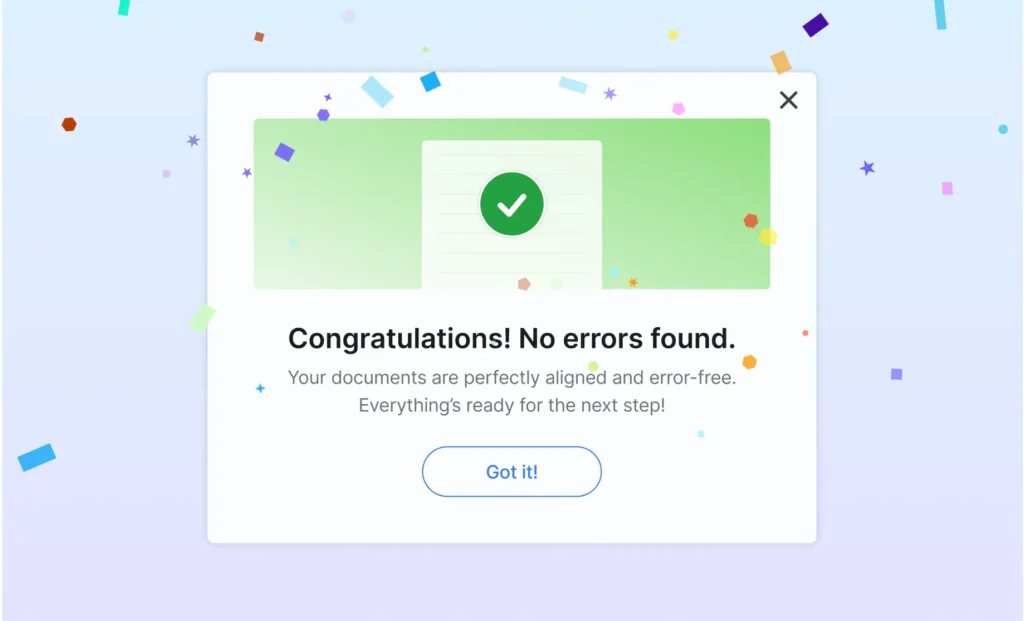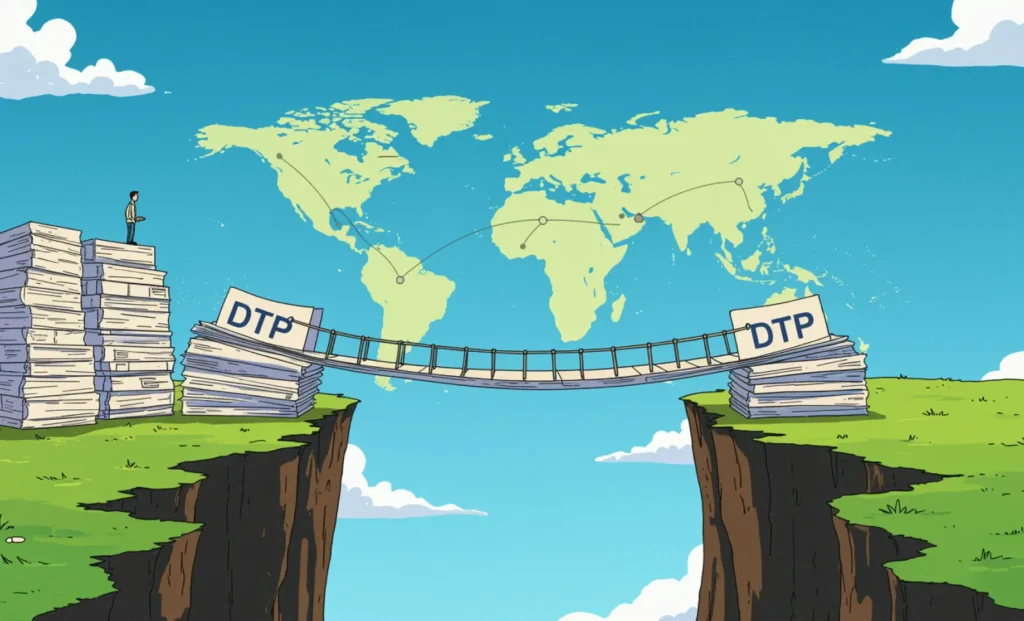
If I were to show you a closet neatly stacked with folded clothes, a kitchen cabinet lined with clean, well-ordered utensils, a bed made with fluffed pillows and a perfectly laid blanket, a living room with a tidy sofa, a clutter-free dining table, and a bathroom with spotless tiles, what do you think all of these have in common? They are thoughtfully arranged and visually pleasing.
The same principle applies to every translated document we deliver to our clients. We aim to mirror the layout and formatting of the source document, ensuring that everything is thoughtfully arranged and visually pleasing. After all, no one enjoys reading a document that feels messy or difficult to understand because of poor presentation.
This is where Desktop Publishing (DTP) comes in. DTP is more than just typing or encoding. It’s about accuracy, consistency, and attention to detail that makes your translated document organized and easy to read. The goal is to make sure every translated document doesn’t just read well but looks perfect too.
DTP is a vital step in the localization workflow—one we simply cannot skip if we want to produce a well-structured, clear, and professionally presented translated output. At Lexcode, we offer a range of DTP services that help ensure every document maintains the quality and integrity of the client’s source document. These services include, but are not limited to, preformatting, post-formatting, translation table creation, subtitling, and transcription. Let’s take a closer look at each one.
Preformatting is the first step in the localization process. We often receive source documents in noneditable formats such as JPEG, PNG, or PDF. As these cannot be directly edited, translations can’t be inserted into them as is. Preformatting addresses this challenge by carefully recreating the source document in an editable format. This allows translators to work on a version that mirrors the original layout of the source file while enabling accurate translation input.
Post-formatting can be done in two ways:
A translation table is a simplified method of organizing translations without the need to replicate the full layout of the source document. It typically comes in a Word or Excel file with two columns: the left contains the source text, and the right is where the translations are inputted. This approach is ideal for content that doesn’t require visual formatting and helps streamline the translation process.
These DTP services apply to video materials.
Have you ever submitted a requirement to a potential employer, only to realize afterward—or worse, be told—that it had an error? That one overlooked mistake could cost you the opportunity. You might need to revise and resubmit or, worse, miss your chance altogether. Even a minor issue in your document’s layout or content can lead to significant consequences.
The same holds true for translated documents. Whether it’s for legal, medical, academic, or business purposes, submitting a file that lacks clarity, consistency, or proper formatting can lead to misunderstandings, rejections, or delays. That’s why DTP isn’t just about encoding and “copy-pasting”—it’s about making sure every detail is correct, every page is clear, and every file is ready to be used without a second thought.
To avoid costly mistakes and deliver the best possible results to our clients, we strongly emphasize quality assurance (QA) throughout the DTP process. Every translated document undergoes multiple layers of careful review to ensure accuracy, consistency, and completeness.
The first layer of QA is manual—our DTP specialists compare the source and translated outputs side-by-side on screen. With sharp focus and attention to every detail, we scan each section to ensure nothing is missed and no errors are introduced. However, as meticulous as we are, we recognize that human eyes alone are not foolproof.
That’s why the second QA layer integrates AI-powered tools. By uploading both the source and translated files, we allow the system to detect any mismatches, inconsistencies, or overlooked elements, serving as a powerful safety net that reinforces our manual work.

Finally, the last layer focuses on checking common error-prone elements: numbers, dates, proper nouns, and other critical details. These are often the small things that can make a big difference, and we make sure to get them right.
In my four years as a DTP Coordinator, I’ve had the privilege of being part of countless projects, from individual to corporate clients. Each document I’ve worked on has a story behind it, and I’m always moved whenever I see a printed version of something I formatted. It reminds me that, in some small way behind the scenes, I’ve played a role in someone’s success. Whether it’s helping someone secure a job abroad, reunite with their loved ones, complete a family’s migration journey, or support the resolution of legal cases, it’s inspiring to know that well-formatted documents can contribute to life-changing moments. That’s why I believe DTP truly supports success, one document at a time.
One corporate project that remains close to my heart is the children’s book originally written in English and then translated into various Filipino dialects. It was a massive and complex task, especially for someone new to the field. I remember working overtime to complete the post-formatting, and there were moments when my patience was really tested. But at the end of it all, I realized the true purpose behind the project: to educate children across the Philippines using their native language. That experience reminded me that the work we do isn’t just about formatting—it’s about empowering others through language and presentation.

More than just formatting and layout, DTP plays a vital role in the success of every translated document. It serves as both the bridge and backbone of effective localization, ensuring that messages are delivered clearly, accurately, and professionally.
DTP connects more than just text and visuals; it links languages, cultures, and people. It ensures that meaning is preserved, design is respected, and communication remains seamless across borders. With a strong commitment to accuracy, consistency, and integrity, DTP helps bring every message to life—the way it was meant to be understood.

I deeply appreciate the role of DTP in one of the most significant books ever written—the Bible. This sacred text was authored by various individuals across different periods thousands of years ago, and it was not originally written in English or Filipino. Yet today, we have access to the Bible in countless languages and formats.
Behind every translated version of this book, I believe DTP played a crucial role not just after the translation but before it was ever made available to the public. Without DTP, how could such an important book be presented in a way that is clear, readable, and accessible to people from all walks of life?
This reminds us that DTP is more than just a technical process. It is a vital part of sharing knowledge, preserving truth, and helping people understand messages that matter.
DTP may happen behind the scenes, but its impact is always front and center. It ensures that every translated document speaks clearly, not just through words but through structure, layout, and thoughtful presentation. Whether it’s supporting a child’s education, helping a family migrate, or preserving the truth in a sacred text, DTP plays a quiet but essential role in bridging communication across cultures. In every page we format, there’s a message we help deliver, and that’s why DTP will always matter.
Why Desktop Publishing Matters: Ensuring Your Translated Documents Look Perfect Every Time